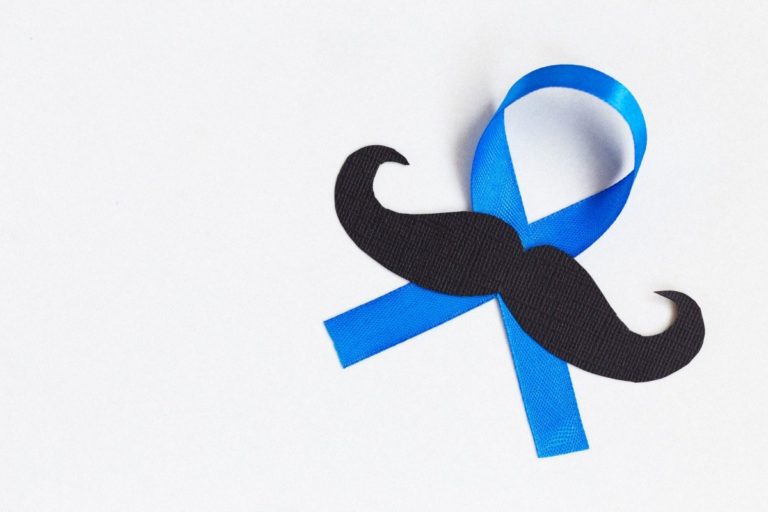TEST YOUR TESTES
Becoming familiar with testicular self-examination

Authored by Lorenzo Rubbini
Despite the overwhelming presence of Christmas decorations popping up everywhere around our cities, we’re still in November (although yeah, it is almost over). For most of us, this means leaving home when it’s still dark and going back when it’s night already – thank you, daylight savings time. As October finished, and with it Women’s Health Awareness Month, it was time to start thinking about men as well. As males, a lot of us are raised to “toughen up”, which – wrongly – leads to shying away from doctors examining your body and refusing to open up about our feelings. The causes are multiple and diverse: the easiest ones to think about are fear and pride, as well as an outdated and detrimental social heritage. These erratic behaviors has a very heavy toll on men – I’ll give you just 3 pieces of data:
- Around the world, about 525,000 men commit suicide every year. That’s 1,440 every year, 1 per minute. Also note that men are generally 2 to 3 times more likely to commit suicide than women.
- More than 1 million prostatic cancer cases are reported every year worldwide. Is it the most deadly cancer around? Absolutely not: if detected early, the 5- year survival chances are 98%. If not, it can be fatal.
- Around 70% of men either never have or don’t regularly check their testicles. Testicular cancer survival rate is 99%, one of the highest ratios among all cancers – but only if detected early enough.
If you think these statistics are alarming and it’s time to make a change for the better, you’re in good company. Since the early 2000s there are two big organizations trying to spread awareness regarding these male-related health issues. The first one is Movember Foundation (movember.com), founded in 2003 in Melbourne, Australia. The second one is No Shave November (no-shave.org), born in 2009 in partnership with the American Cancer Society. Check their website to learn more about their goals, research programs and to support them. In this article I want to share with you how to correctly carry out a Testicular Self Exam (TSE). TSE is a fancy medical term to describe the self-performed palpation of your testes. Performing it is super easy, super fast and it could save your life. Because if you think getting kicked in the balls is bad, you can’t imagine how much worse testicular cancer can be.
What are we taking a look at?
Testicles, testes, nuts, balls, family jewels. Just few of the many names – more or less anatomically appropriate – to name the male gonads. Although they are not vital organs, they are rightly considered very important. Their primary function is to produce sperm, a liquid that contains spermatozoa, the male gametes. These little tadpole-looking cells have the job of swimming from your testes up until your partner’s fallopian tubes. Here they fuse with female ovum (aka egg cell) in a process called fertilization, which will give raise to a zygote. Although oversimplified, this is how – except for very few exceptions – you were born, how your parents were born, how every single human ever was born. You can realize, then, that testicles are pretty important. Anatomically speaking, they are about the size of a walnut in fully developed adults, although they can vary greatly in size. On the posterior surface of each testicle we can find the epididymis, a small tube connecting the testicle to the vas deferens which will ultimately lead to the ejaculatory duct. Testicles are covered by several layers: from innermost to outermost, we find three tunicae (vasculosa, albuginea and vaginalis), two spermatic fasciae, Dartos’ fascia and, ultimately, the skin covering all of these sheaths called scrotum. If they’re this well protected, it means they should be pretty important, right? Why not giving them a quick check regularly, then?
How is Testicular Self Examination performed?
TSE is fast, self-performed and above all effective. This has a number of advantages: we do not need a healthcare professional to perform it – which can be a blessing for the shiest of us – and it can be performed routinely. There are a few easy steps to follow to make sure this exam is as valid as possible.
- Take a warm shower: after a proper hot shower your scrotum is relaxed. This is because the dartos muscle relaxes in a warm environment. This step is crucial: if dartos is not properly relaxed, it may may be harder to properly asses the state of your genitals, due to the wrinkled appearance of the scrotum and the possibility that the testes themselves are partly retracted.
- Examine each testicle: get touchy! Take each testicle in your hand and start feeling it by simply touching it. Physiological, healthy testicles should feel firm but not too hard. On the front and on the sides they should feel smooth, without any major lump or depression. Moreover, size matters: average size is about that of a walnut, although slight variations are still considered normal and do not require medical attention. Testes can also vary in size between each other, as usually one is slightly smaller and higher up than the other.
- Find the epididymis: the epididymis is located on the posterior surface of each of the testes. It should feel like a small, tube-like structure that ascends from the bottom of each testicle. It is very important to be familiar with this anatomical feature: making sure you know what it is and knowing it’s there can help you discern it from any abnormal lump or bump.
What is “unusual” and isn’t supposed to be there?
If all of the TSE steps are followed correctly, testicular conditions are rather simple to detect even by non-trained individuals; the more one is used to perform it, the easier it is to detect any abnormality. The main signs of a pathology are the following:
- A lump or bump on the surface of a testicle: any irregularity on the surface of either of the testes is to be taken seriously and urgently brought to medical attention. Bumps can vary in shape and size, but generally go from the size of a rice grain to that of a green pea.
- A “bag-of-worms” feeling on the lateral surface of the scrotum: this sensation can be a sign of varicocele, which is an abnormal swelling of the pampiniform veins complex surrounding the testes. Although it might not cause other symptoms, in some cause it’s been shown that varicocele decreases fertility, affecting the shape and/or function of spermatozoa.
- A rapidly evolving change in size: if you feel that either of your testicles is rapidly changing in size, either shrinking or enlarging, seek medical attention as soon as possible. Even though a change in size is not an automatic sign of testicular cancer, contacting the closest medical facility is of primary importance: other serious pathologies may be associated with changes in size, like inflammation (orchitis) or testicular torsion.
- A sudden change in color: generally speaking, a red to purple coloring in the scrotum exemplifies an accumulation of blood in the are of the testicles. This can mean many things, from a less-concerning friction rash to more serious health issues like inflammation or Red Scrotum Syndrome.
None of these signs has to be neglected. Although in some cases these are just temporary and get better over time, some serious pathologies are associated with them. When talking about testicles – as well as any health concern anyone can experience – you can’t say “let’s wait and see what happens”. If any of the symptoms mentioned above is noticed, you must visit your doctor as soon as possible. Performing TSE often and regularly leads to a better understanding of what’s normal and what’s not, thus to an earlier diagnosis. It could be nothing, it could be something that goes away with some cream, but it could be something more serious that can seriously affect your health and well-being. Put your rationality before pride or shyness.
I’m gonna wrap it up with a quote from the great Ice Cube – “you better check yo self before you wreck yo self”.

